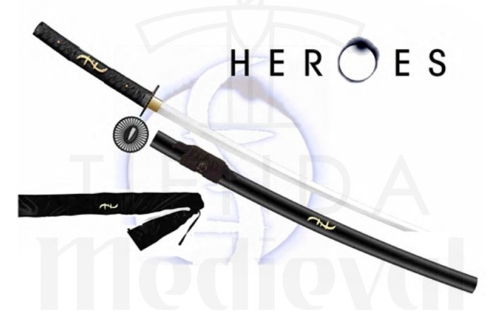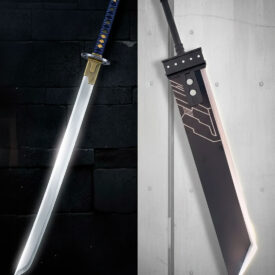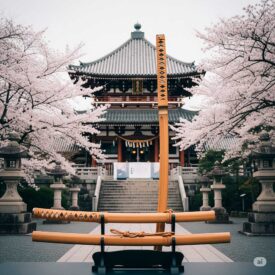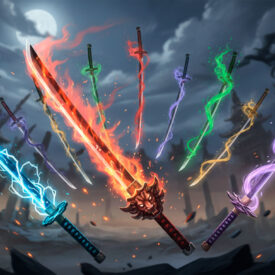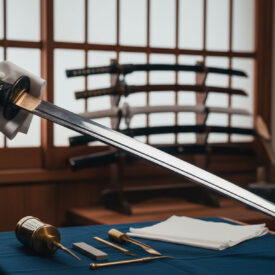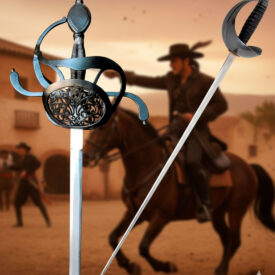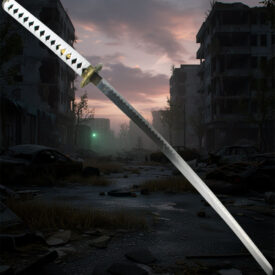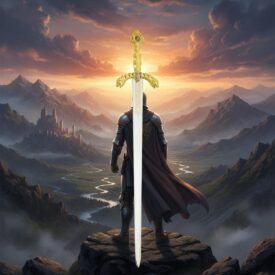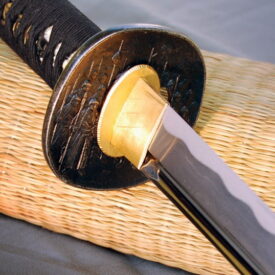What secret does a sword that travels through centuries hold? Imagine holding a katana that has crossed temporal lines, that has witnessed imagined battles and that, on screen, decides the fate of a hero. Hiro Nakamura’s katana is not just a prop: it is the symbolic axis that unites samurai tradition, temporal paradoxes, and the modern mythology of the series Heroes.
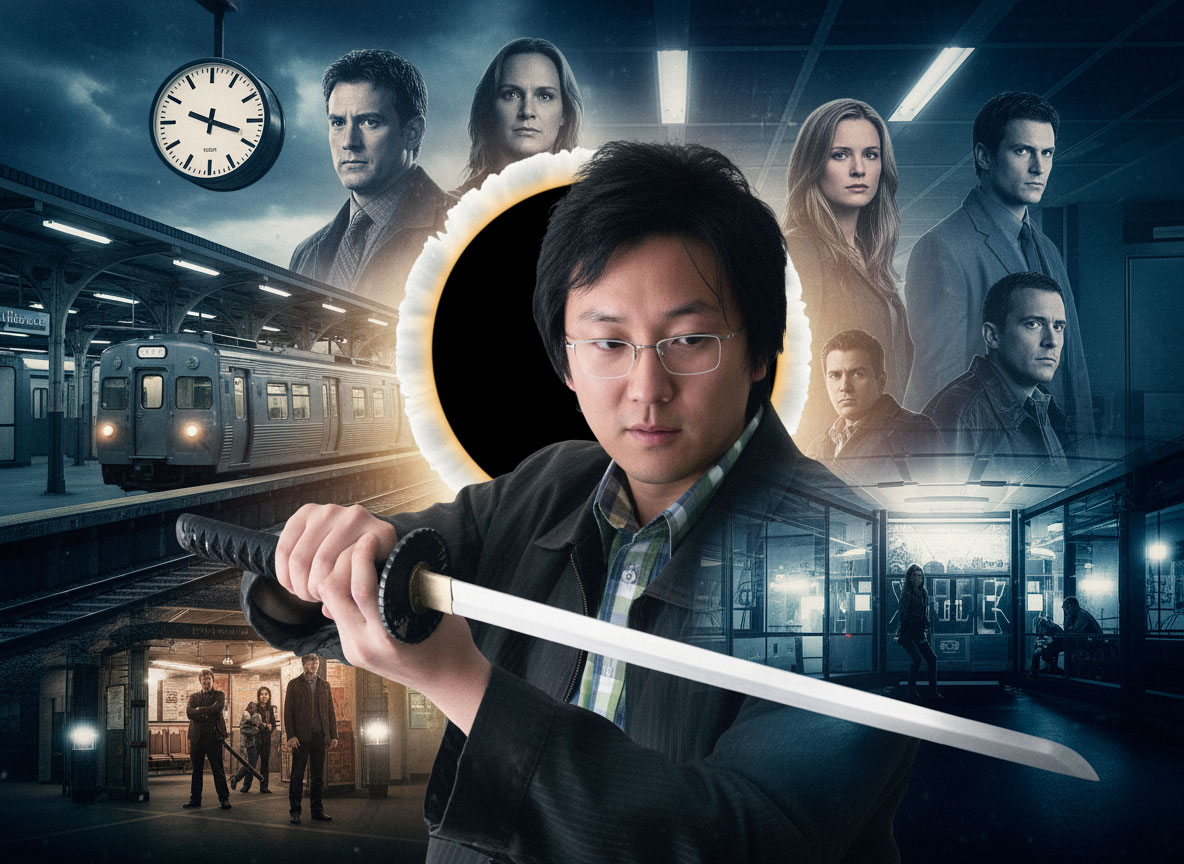
Hiro, an office worker who discovers the power to bend space and time, finds in the sword an extension of his vocation: to protect, correct past mistakes, and assume a greater destiny. In this article, we will explore its fictional origin, its relationship with historical figures like Miyamoto Musashi, the meaning of the symbol engraved on the hilt, how the series plays with chronological paradoxes, and what the replicas inspired by the katana offer.
Hiro Nakamura: The Dreamer Who Wields a Legend
Hiro is not the prototype of the classic warrior. He is a dreamer, a fan of comics and pop culture who suddenly has to assume a gigantic responsibility. The katana appears in his life as both a symbol and a tool: Japanese tradition condensed in steel, and at the same time an object capable of narrating time travel.
Throughout the series, the sword becomes a bridge between identities: Takezo Kensei (the legend), Hiro on his mission, and other characters who intertwine with that story. It is no coincidence that a science fiction series places a katana as a reliquary of destiny: the form, the forging, and the symbol on the hilt speak of heritage, honor, and mystery.
Hiro’s Katana: History Between Legend, Time, and Symbol
The chronology of this katana in fiction is complex and fascinating. Below is the timeline that mixes historical facts and the narrative decisions of the series.
| Era | Event |
|---|---|
| Historical Background | |
| Until 1648 | Miyamoto Musashi, a historical figure and reference for Takezo Kensei, lived until 1648; he is famous for his duels, his philosophy, and for preferring bokkens (wooden swords) over katanas. |
| Time Travel and Paradox | |
| 1671 (fiction) | Hiro travels to feudal Japan in 1671 to meet and help the legendary Takezo Kensei; the date creates a discrepancy with Musashi’s historical death in 1648, creating a temporal paradox adapted by the screenwriters. |
| Intertwined Identities | |
| Narrative Period | Within the series, Takezo Kensei’s identity becomes complicated: it is suggested that Kensei is a version of Hiro himself in the past, Adam Monroe is also identified as Kensei, and it is theorized that Hiro could be Kensei without knowing it after his return. |
| Fictional Origin of the Katana | |
| Modern Creation | The katana is a creation of the “Heroes” screenwriters which, within the series’ universe, is legendary attributed to Takezo Kensei and acts as a central element for Hiro’s development. |
| The Symbol on the Hilt | |
| Throughout the Series | The mysterious symbol engraved on the hilt appears repeatedly: Niki Sanders’ tattoo, the Haitian’s pendant, the cheerleader’s textbook, computer sequences, and in other forms, functioning as a visual and thematic thread. |
| Meanings and Theories | |
| Explanation within the Series | Ando explains that the symbol combines the kanjis 才 (sai, “great talent” or “genius”) and 与 (yo, “sent by the gods”), suggesting “one who is born with a talent” or “one to whom a talent has been given.” |
| Fan Interpretation | Fans propose that the symbol resembles half of a DNA chain or an advanced RNA chain, implying that the protagonists possess a distinct or evolved DNA; this reading adds a biological and metaphorical layer to the emblem. |
Takezo Kensei, Miyamoto Musashi, and the Narrative Adaptation
To understand the katana, one must understand the figure surrounding it: Takezo Kensei. The series freely draws inspiration from the legend of Miyamoto Musashi to create a mythological hero who, within the fiction, acquires multiple identities.
Miyamoto Musashi was a swordsman and philosopher who lived until 1648 and whose figure inspires respect and mystery. The screenwriters of Heroes take this historical basis and twist it to create a fantastic timeline: they place episodes with Kensei in 1671, allow figures from the future to alter the past, and, in that entanglement, inscribe the katana as a founding object.
The Symbol on the Hilt: Kanjis, DNA, and Modern Mythology
The symbol engraved on the hilt is one of the most interesting motifs in the series. Ando explains it as the sum of two kanjis: 才 (sai) and 与 (yo). This reading, poetic and mystical, turns the sword into a mark of destiny.
Fans, with an analytical eye, draw biological parallels: the shape of the emblem resembles a genetic chain. This dual reading—mystical and scientific—reinforces the central theme of Heroes: beings who transcend the human by mutation, a gift, or a higher intervention.
The Katana as a Character: More Than Steel
In narrative, objects can behave like characters. Hiro’s katana acts in this way: it conditions decisions, reveals identities, and harmonizes the series’ mythology. When Hiro wields the sword, he assumes a role that goes beyond the individual: he enters the tradition of warriors whose weapon is their reason for being.
This treatment makes the replica an object of desire for collectors: not only for its physical appearance, but for the number of stories it contains. Every mark, every symbol, is a layer of meaning that the aficionado will appreciate.
Replicas and Reproductions Inspired by Hiro’s Katana
There are replicas made for recreation, exhibition, and collecting. Some seek extreme fidelity, others focus on aesthetics for cosplay or decoration. It is important to distinguish between an ornamental replica and a functional katana forged with carbon or stainless steel.
Below is a guide to attributes to review when evaluating a replica: materials, construction of the tsuba (handguard), type of saya (scabbard), quality of the tsuka (handle), and the detail of the symbol on the hilt. These characteristics define whether a replica is merely visual or suitable for controlled practices.
Practical Comparison Between Types of Replicas
| Type | Recommended Use | Common Material | Advantages | Limitations |
|---|---|---|---|---|
| Ornamental | Decoration, cosplay | Stainless steels or alloys | Faithful appearance, economical, safe for display | Not suitable for cutting or rigorous practice |
| Functional Recreational | Light training, basic cuts | Harder steels (special alloys) | Better balance and durability than ornamental | Requires maintenance, can be more expensive |
| Traditional Forged | Advanced practices, high-level collecting | Forged and heat-treated carbon steel | High cutting ability, authenticity in construction | Needs professional care and often legal considerations |
Key Features of Hiro’s Katana (Series Version and Replicas)
- Handle: marked by an identifiable emblem that acts as a narrative thread.
- Blade: in fiction, traditional in appearance; in replicas, varies depending on the purpose (ornamental or functional).
- Scabbard (saya): designed to preserve the feudal aesthetic; replicas will feature careful finishes and lacquers.
- Tsuba: the handguard can incorporate motifs that refer to the series and the feudal period.
The Narrative Role of the Sword in Temporal Paradoxes
The presence of the katana at different historical moments and the superposition of identities (Hiro, Takezo Kensei, Adam Monroe) create a network of paradoxes. In narrative terms, the sword functions as an anchor: its form and emblem allow the viewer to follow changes in epoch and identity.
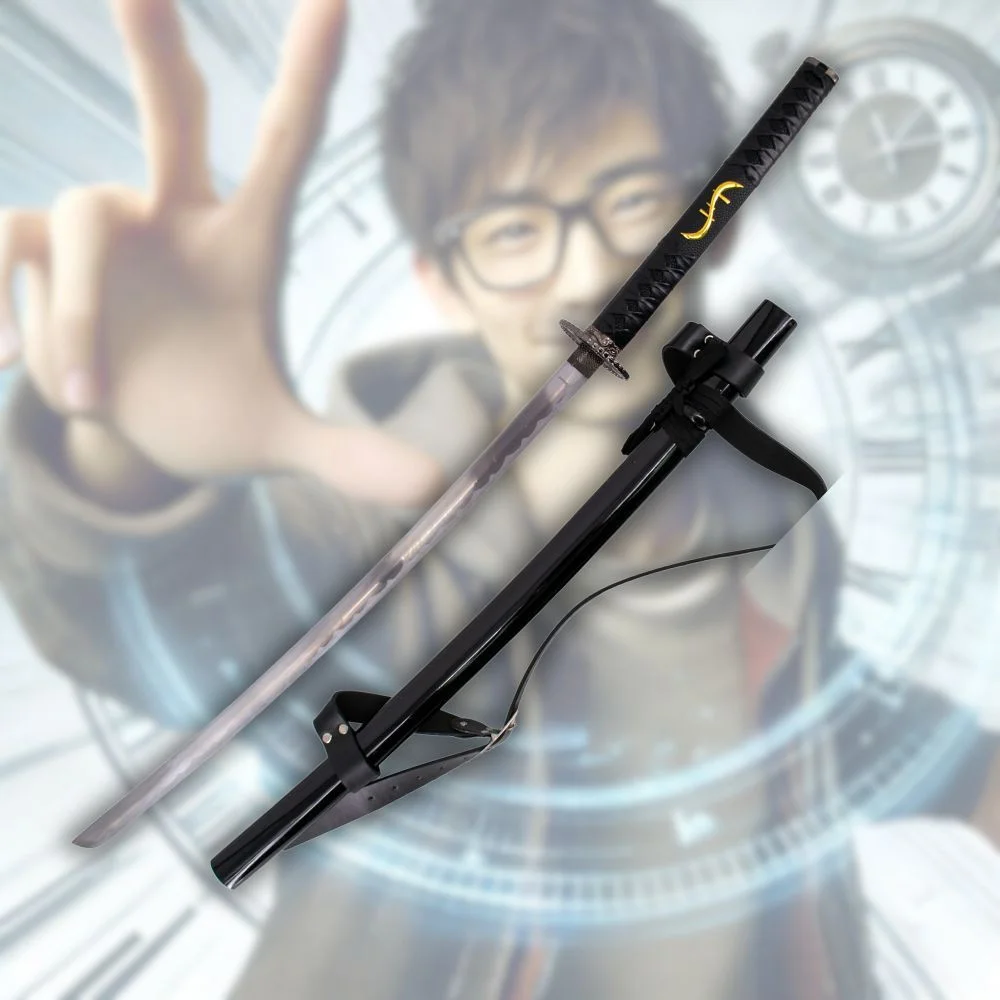
This effect is deliberate: an object with constant features facilitates the understanding of temporal travel, even when the plot unfolds loops and alternative versions of the same person. The katana is, therefore, a resource for clarity and symbolic weight.
Symbolic Interpretations and Contemporary Readings
From a symbolic perspective, the katana refers to bushido, honor, and responsibility. In Hiro’s hands, this symbology combines with a modern sensibility: the hero who wants to change the world without losing his humanity.
The biological reading (DNA/RNA) adds a postmodern layer: the katana not only identifies, but points to a different nature of the characters. This ambiguity between the mystical and the scientific is one of the thematic successes of the series.
The Audiovisual Treatment: Design, Sound, and Scenic Presence
On screen, the katana comes to life thanks to design decisions. The curvature of the blade, the shine of the steel, and the emblem on the hilt are assembled with sound-visual work that reinforces its mythical character.
The sound effects that accompany the sword’s appearances and the shots that exalt it reinforce the perception of power. The katana is not an accessory: it is a dramatic epicenter that guides empathy towards Hiro and his mission.
Maintenance and Preservation of a Replica (Practical Guide)
If you own a replica, preservation is key to maintaining its aesthetic and symbolic value. Below is a list of recommended practices for keeping a katana in optimal condition:
- Periodic cleaning of the blade to prevent oxidation (use lint-free cloths and protective oil).
- Avoid handling the blade with bare hands to reduce corrosion from sweat.
- Regularly check the fit between the tsuka and nakago (handle and tang) to ensure integrity.
- Store in a dry place, protected from direct light and humidity.
The Fan Community and the Katana as a Cultural Object
Hiro’s sword has transcended the screen to become a cultural object: replicas at conventions, collector’s items, and debates among fans about its symbolism. This fan life strengthens the series’ mythology and keeps Hiro’s figure current as a pop icon.
Cosplayers reproduce the symbol, forge their own narratives, and reinterpret scenes, keeping the epic around the katana alive. The object, thus, not only refers to a written story, but to a communal practice that renews it.
Final Reflection on a Sword That Crosses Eras
Hiro Nakamura’s katana synthesizes the best of two worlds: an aesthetic that refers to Japanese tradition and a narrative function typical of modern science fiction. Its emblem, its fictional history, and the possibility of finding reliable replicas make this sword a lasting emblem within television culture.
Whether you look at it as a collector’s item, a narrative resource, or a mythological symbol, the katana continues to evoke the question that opened this text: what secrets can steel carry when it crosses time? That question is the true engine of its legend.
